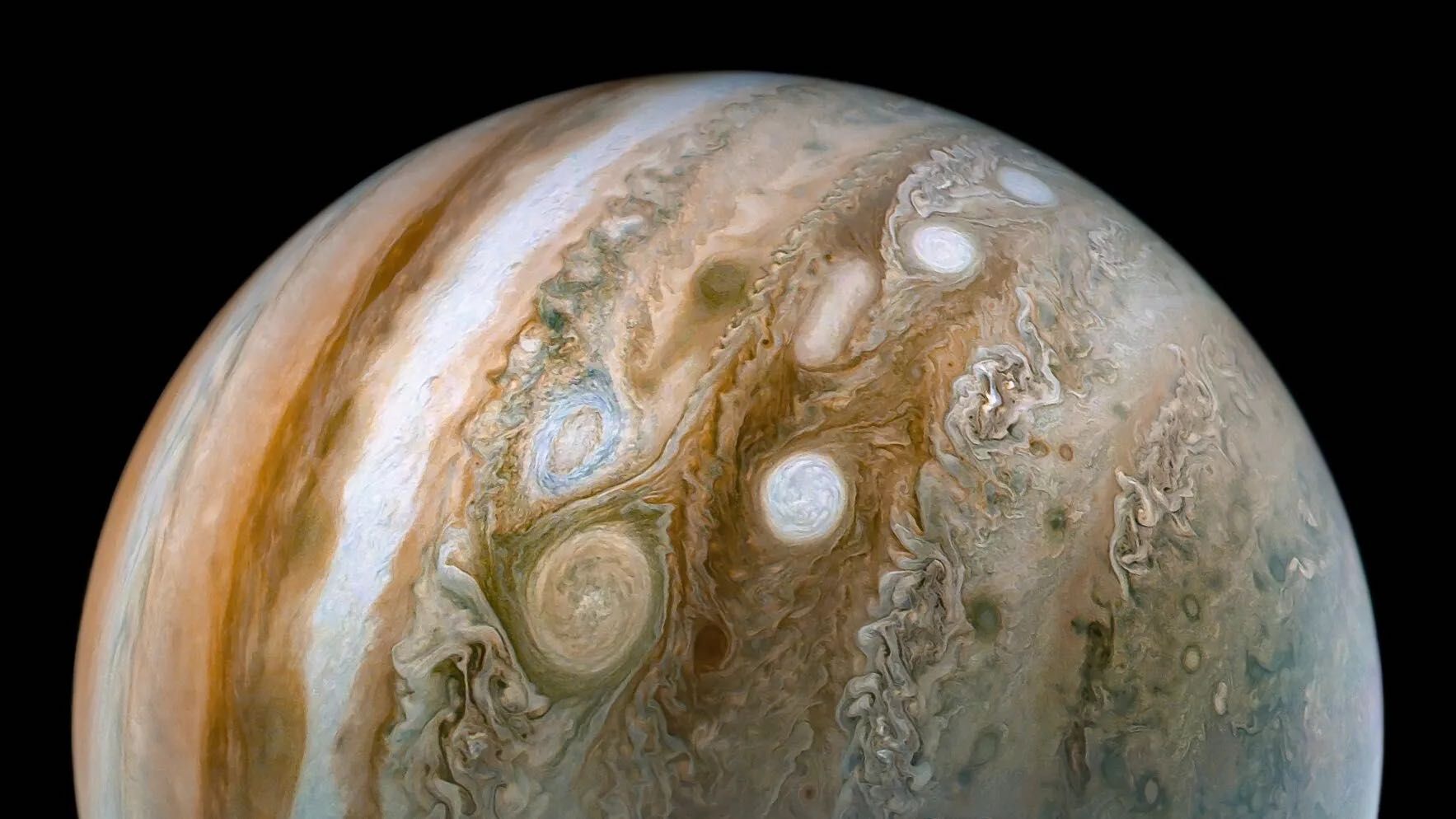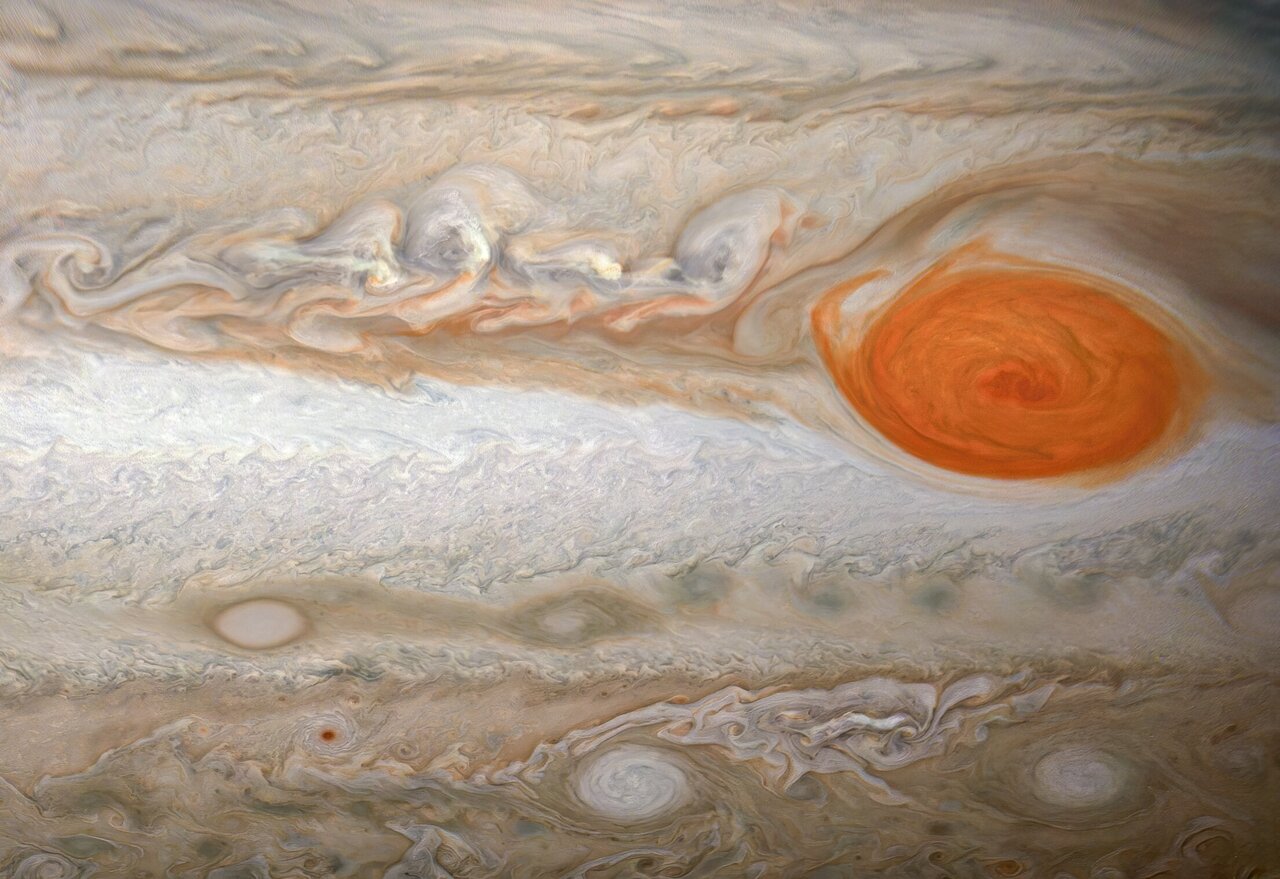New observations from NASA Juno taken in microwave light show that the visible zones and bands on the surface extend below and change while Jupiter’s Great Red Spot has been found to extend down 500 kilometers below the surface.

While many people are preparing for the weekend holiday celebrations and observations, the planetary science world is still making amazing discoveries. We turn now to NASA’s Juno spacecraft. One of the primary goals of this mission is to gain a greater understanding of how the storms and cloud layers work beneath the surface. To that end, the spacecraft is equipped with a microwave radiometer.
This instrument is designed to measure microwave emissions from deep inside the planet, using wavelengths ranging from 1.4 centimeters to 50 centimeters. The corresponding atmospheric pressures are about 0.6 bars at the surface, which is less than the surface of Earth, and down past 100 bars or 250 kilometers beneath the cloud tops. Sometimes, you have to step outside visible light to find what you are looking for, and that’s what was done here.
When we look at Jupiter in visible light, we see a pattern of lighter zones and darker belts. You can observe this banding with a relatively small telescope even. Using microwaves, the zones appear bright while the belts stay dark. Brighter objects in these wavelengths are either warmer or lack ammonia, which tends to absorb microwave light. And down to five bars of pressure or five times the pressure at the Earth’s surface, this structure persists.
Then, at 10 bars, the entire pattern reverses. The darker zones are now bright in microwave light while the belts become dark. Something has to have changed, and it’s either the temperature or the abundance of ammonia. This region of transition between 5 and 10 bars is now called the “jovicline” because it’s similar to how seawater in our ocean’s thermocline transitions from relative warmth to colder water.
The results of this data analysis were published in the Journal of Geophysical Research: Planets, and lead author Dr. Leigh Fletcher explains: One of Juno’s primary goals was to peer beneath the cloudy veil of Jupiter’s atmosphere and to probe the deeper, hidden layers. Our study has shown that those colorful bands are just the ‘tip of the iceberg’ and that the mid-latitude bands not only extend deep but seem to change their nature the further down you go. We’ve been calling the transition zone the jovicline, and its discovery has only been made possible by Juno’s microwave instrument.
This jovicline is nearly coincident with an atmospheric layer that is stable and created by condensing water.
Dr. Scott Bolton, Principal Investigator for the Juno mission, said: These amazing results provide our first glimpse of how Jupiter’s famous zones and belts evolve with depth, revealing the power of investigating the giant planet’s atmosphere in three dimensions.

Of course, we would be remiss when talking about Jupiter’s clouds if we didn’t mention the Great Red Spot, and conveniently, research has been published about that famous storm.
Dr. Scott Bolton is the lead author on a new paper published in Science that looks at just how deep this 16,000-kilometer storm that astronomers have been observing for 400 years goes. His team used the same microwave instrument as in our previous story, and they found the storm extends well below the altitude where we expect water and ammonia to condense. These results suggest that there are deeper processes such as precipitation and downdrafts at work and could connect the interior of the gas giant with its deep atmosphere.
A second study in Science led by Marzia Parisi used gravity measurements from Juno and further constrained the depth of the Great Red Spot to no more than 500 kilometers; however, the zonal jets surrounding the story can reach depths of almost 3,000 kilometers. Giant storms, indeed.
More Information
- University of Leicester press release
- “Jupiter’s Temperate Belt/Zone Contrasts Revealed at Depth by Juno Microwave Observations,” L. N. Fletcher et al., 2021 October 28, JGR Planets
- Juno spacecraft data probes depth and structure of Jupiter’s Great Red Spot (EurekAlert)
- “Microwave observations reveal the deep extent and structure of Jupiter’s atmospheric vortices,” S. J. Bolton et al., 2021 October 28, Science
- “The depth of Jupiter’s Great Red Spot constrained by Juno gravity overflights,” Marzia Parisi, 2021 October 28, Science
This story was written for the Daily Space podcast/YouTube series. Want more news from myself, Dr. Pamela Gay, and Erik Madaus? Check out DailySpace.org.
Originally published on medium.com.





